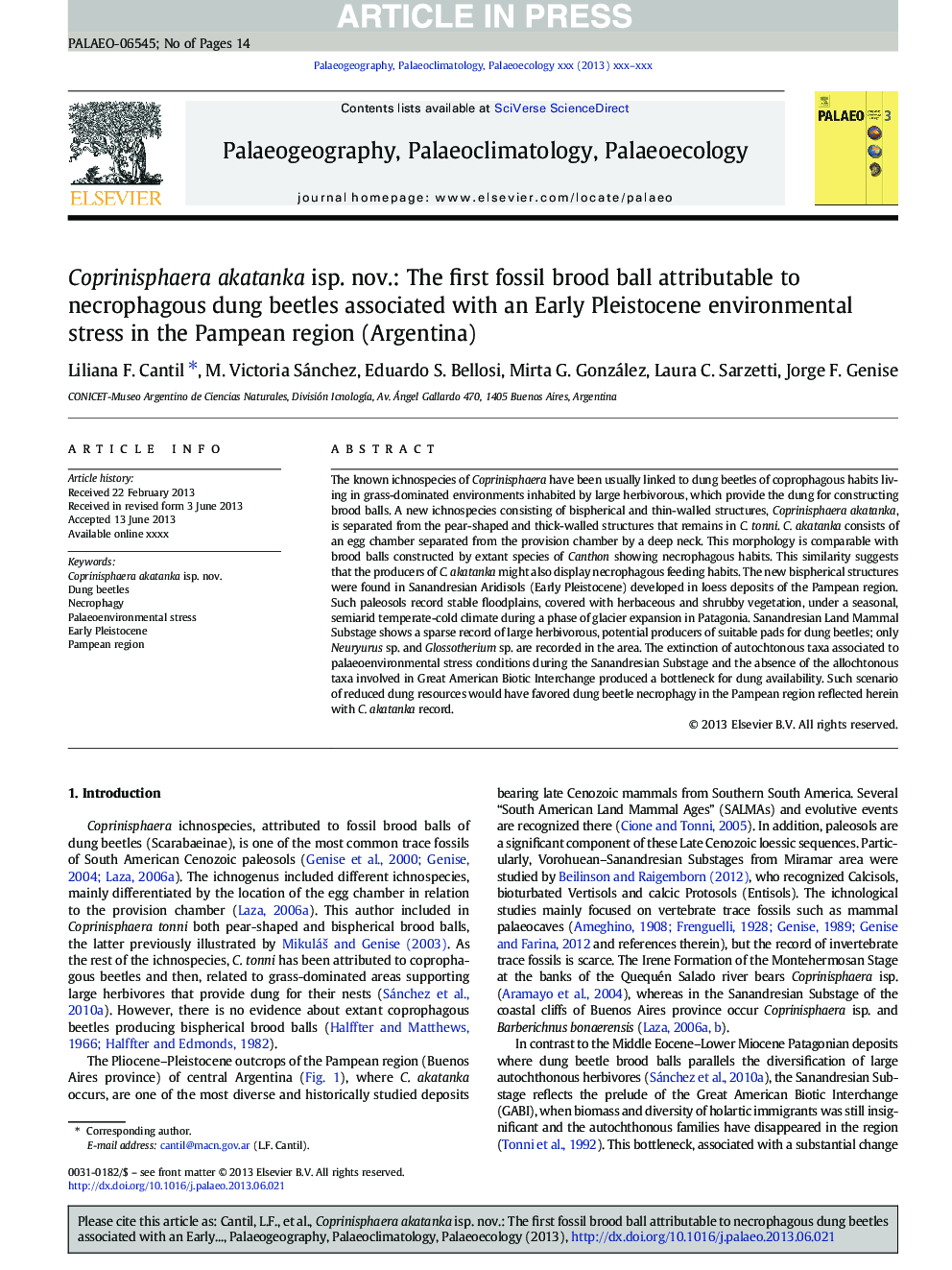| کد مقاله | کد نشریه | سال انتشار | مقاله انگلیسی | نسخه تمام متن |
|---|---|---|---|---|
| 6350358 | 1622203 | 2013 | 14 صفحه PDF | دانلود رایگان |
عنوان انگلیسی مقاله ISI
Coprinisphaera akatanka isp. nov.: The first fossil brood ball attributable to necrophagous dung beetles associated with an Early Pleistocene environmental stress in the Pampean region (Argentina)
دانلود مقاله + سفارش ترجمه
دانلود مقاله ISI انگلیسی
رایگان برای ایرانیان
موضوعات مرتبط
مهندسی و علوم پایه
علوم زمین و سیارات
فرآیندهای سطح زمین
پیش نمایش صفحه اول مقاله

چکیده انگلیسی
The known ichnospecies of Coprinisphaera have been usually linked to dung beetles of coprophagous habits living in grass-dominated environments inhabited by large herbivorous, which provide the dung for constructing brood balls. A new ichnospecies consisting of bispherical and thin-walled structures, Coprinisphaera akatanka, is separated from the pear-shaped and thick-walled structures that remains in C. tonni. C. akatanka consists of an egg chamber separated from the provision chamber by a deep neck. This morphology is comparable with brood balls constructed by extant species of Canthon showing necrophagous habits. This similarity suggests that the producers of C. akatanka might also display necrophagous feeding habits. The new bispherical structures were found in Sanandresian Aridisols (Early Pleistocene) developed in loess deposits of the Pampean region. Such paleosols record stable floodplains, covered with herbaceous and shrubby vegetation, under a seasonal, semiarid temperate-cold climate during a phase of glacier expansion in Patagonia. Sanandresian Land Mammal Substage shows a sparse record of large herbivorous, potential producers of suitable pads for dung beetles; only Neuryurus sp. and Glossotherium sp. are recorded in the area. The extinction of autochtonous taxa associated to palaeoenvironmental stress conditions during the Sanandresian Substage and the absence of the allochtonous taxa involved in Great American Biotic Interchange produced a bottleneck for dung availability. Such scenario of reduced dung resources would have favored dung beetle necrophagy in the Pampean region reflected herein with C. akatanka record.
ناشر
Database: Elsevier - ScienceDirect (ساینس دایرکت)
Journal: Palaeogeography, Palaeoclimatology, Palaeoecology - Volume 386, 15 September 2013, Pages 541-554
Journal: Palaeogeography, Palaeoclimatology, Palaeoecology - Volume 386, 15 September 2013, Pages 541-554
نویسندگان
Liliana F. Cantil, M. Victoria Sánchez, Eduardo S. Bellosi, Mirta G. González, Laura C. Sarzetti, Jorge F. Genise,